Dogs are wonderful companions brimming with love and loyalty, but sometimes, their behavior can leave us scratching our heads. These furry friends have their quirks, and understanding these peculiar actions can help strengthen the bond we share with them. Let’s delve into some of the most baffling canine behaviors and try to make sense of them. With a little insight, you might find these strange antics to be as endearing as they are puzzling.
1. Tail Chasing
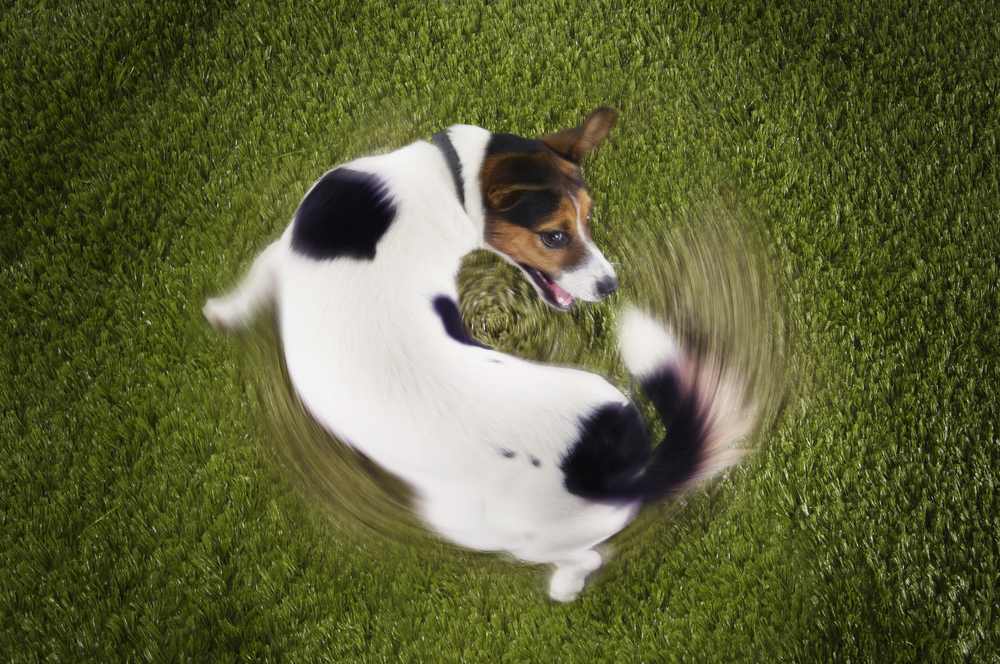
It’s a sight that can bring a smile to even the grumpiest faces—your dog spinning in circles, trying to catch its own tail. While this might look like just a playful activity, it can sometimes indicate boredom or excess energy. Dogs often chase their tails for entertainment or to burn off steam, especially if they lack sufficient exercise. Occasionally, tail chasing can become a compulsive behavior, akin to a nervous habit. According to Purina, tail chasing in dogs is often a playful or attention-seeking behavior, but it can sometimes signal boredom, excess energy, or even compulsive tendencies.
On the lighter side, puppies tend to chase their tails simply because they’re still getting familiar with their bodies. As they grow older and more accustomed to their anatomy, this behavior usually diminishes. For older dogs, tail chasing might be a way to seek attention from their owners. If your pup suddenly starts this behavior out of the blue, it might be wise to check for fleas or other discomfort. Remember, while it’s often harmless, it’s essential to ensure it’s not a cry for help.
2. Rolling in Smelly Things
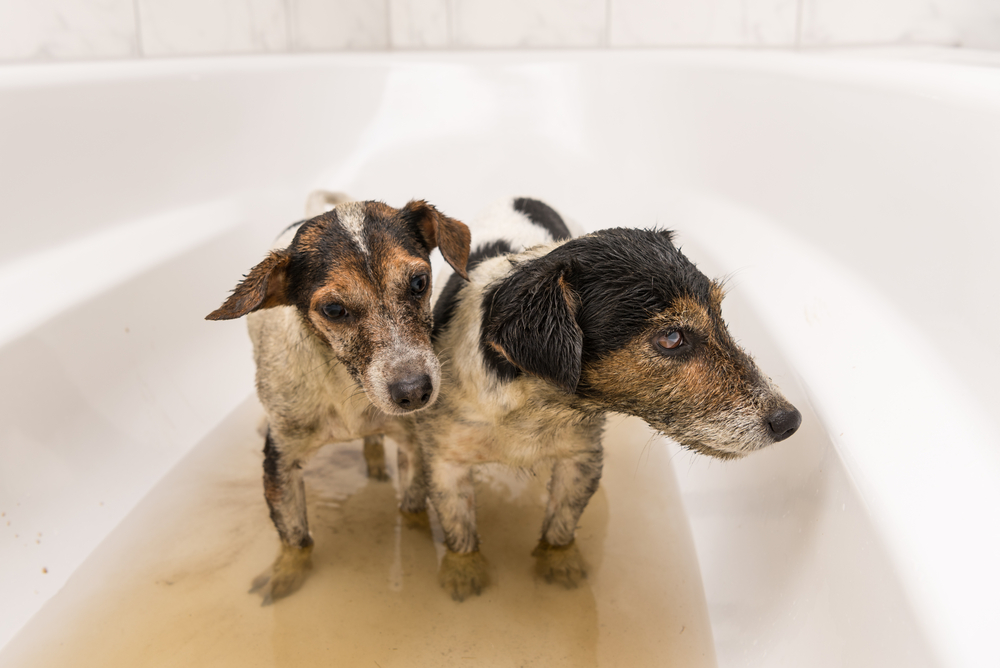
If your dog has ever returned from a walk reeking of something indescribable, you’re familiar with this peculiar habit. Dogs seem to have a knack for finding the smelliest substance and rolling in it with sheer delight. Although this behavior is baffling to humans, it harkens back to their ancestral roots. Wild dogs and wolves often roll in strong odors to mask their scent, aiding in hunting or communicating with their pack. This instinctual behavior continues in domesticated dogs, much to their owners’ dismay.
While it may be a natural instinct, it’s not exactly pleasant for those who have to share a living space with the odoriferous aftermath. Bathing your dog immediately after such escapades is often necessary to restore household harmony. Some experts suggest that rolling in strong smells may also be a way for dogs to show off to their human pack. They might enjoy watching our reaction, not fully understanding why we find it disagreeable. Providing ample playtime and scent-focused toys can help divert this habit.
3. Eating Grass
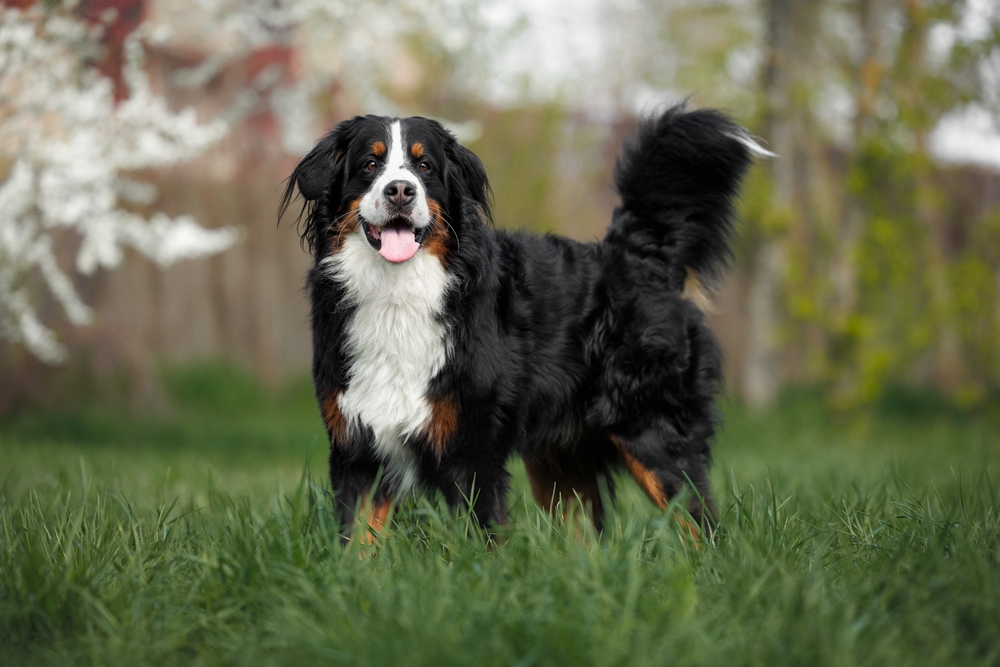
Seeing a dog munch on grass like a grazing cow can be perplexing. The common belief is that dogs eat grass when they feel unwell and want to induce vomiting. While this can be true, not all grass munching leads to a purge. Some dogs simply enjoy the taste or texture, especially if they’re lacking certain nutrients or fiber in their diet. It’s generally not harmful, but it’s important to ensure the grass is free from pesticides and chemicals. The Kennel Club notes that while some believe dogs eat grass to induce vomiting when unwell, studies suggest that most grass-eating dogs are not ill before consumption and do not vomit afterward.
If your dog is eating grass excessively, it might be a sign to reevaluate their diet. Providing a well-balanced, high-fiber diet can sometimes curb this behavior. However, if it becomes compulsive or seems to cause discomfort, a trip to the vet could rule out underlying issues. Some dogs just enjoy the experience of nibbling at grass, perhaps as a sensory exploration or out of curiosity. Watching your dog graze like a herbivore can be amusing, but it’s essential to monitor their health in tandem.
4. Spinning Before Lying Down
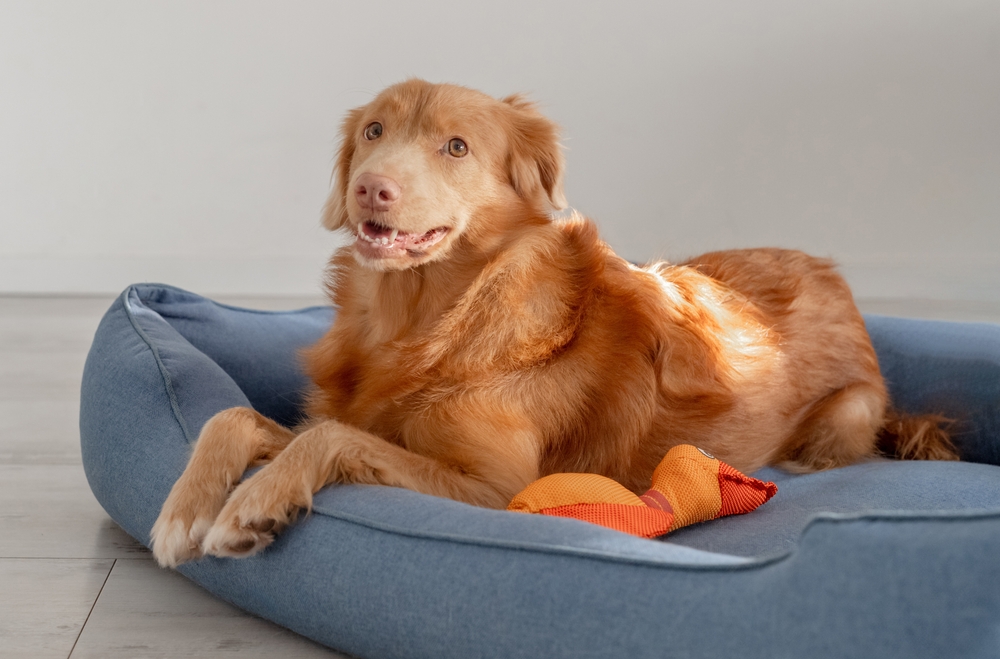
Before settling down for a nap, many dogs seem to perform a ritualistic spin. This behavior, as adorable as it is puzzling, has deep-rooted origins. In the wild, canine ancestors would circle to pat down tall grass or snow, creating a comfortable sleeping area. This instinctual behavior provides security and comfort, even if your dog is just circling on a plush pet bed. Spinning can also help dogs find the perfect spot to lie down, ensuring they’re comfortable and safe.
Observing this behavior in your pet can be reassuring, knowing it’s a sign of them making themselves at home. However, excessive spinning might indicate discomfort or a medical issue, particularly in senior dogs with joint problems. If your dog appears restless while spinning, it might be worth checking for underlying health concerns. Most times, though, it’s just a charming habit that links them to their wild past. Letting your dog spin to their heart’s content is usually harmless and quite entertaining.
5. Barking at Nothing
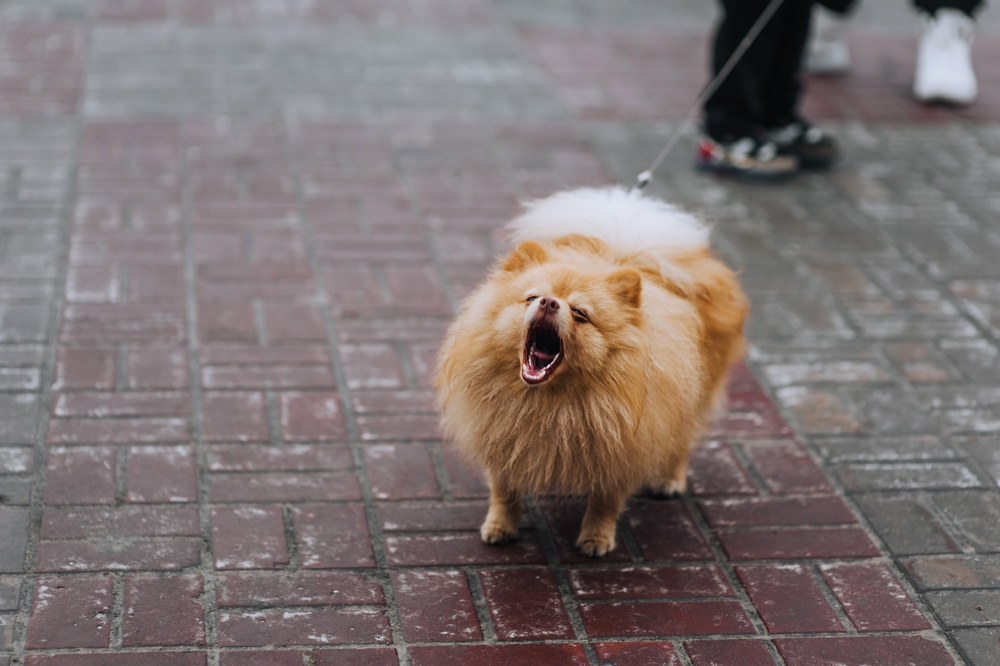
Dogs barking at seemingly nothing can be both eerie and annoying. While it might seem as if they’re barking at an invisible presence, dogs have acute senses that are far superior to ours. They might be hearing distant sounds, sensing a change in the environment, or even smelling something unusual. Sometimes, dogs bark out of boredom or to get attention, and this habit can be exacerbated if it’s rewarded with attention, even if negative. Understanding why your dog is barking can help address the underlying cause.
If your dog barks incessantly at nothing, introducing more physical and mental stimulation can reduce boredom-induced barking. Training and redirecting their focus can also help in managing this behavior. Providing them with toys, puzzles, or even a companion can alleviate loneliness and keep them occupied. In some cases, anxiety might be a factor, requiring more comprehensive behavior modification or consultation with a professional. Knowing your dog’s triggers and providing consistent training can help curb unnecessary barking and maintain peace in the household.
6. Tilting Their Head

One of the most endearing dog behaviors is the head tilt, often in response to hearing something intriguing. This charming gesture can melt even the coldest of hearts, making it a favorite among dog owners. While the exact reason dogs tilt their heads isn’t definitively known, it’s believed they do so to better understand sounds. By adjusting the position of their ears, dogs may pinpoint where a sound is coming from or discern its meaning. The head tilt can also be a way for dogs to show engagement and attention to their humans.
Beyond its practical purpose, the head tilt often results in positive reinforcement from amused owners. Dogs may learn that this action gets them extra affection and use it to their advantage. Some theories suggest that dogs may also tilt their heads to see past their muzzles, getting a better view of what interests them. Regardless of the reason, this behavior is usually harmless and adds to their adorable nature. Encouraging this behavior with positive interaction can make for delightful exchanges between you and your pup.
7. Sniffing Everything
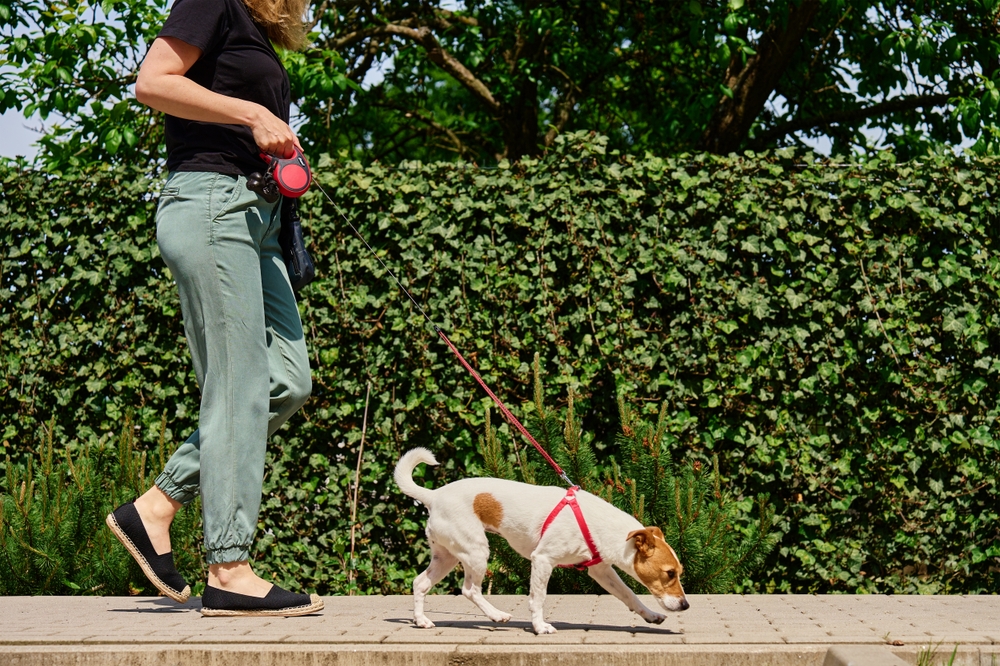
Dogs have an extraordinary sense of smell, and sniffing is their primary way of gathering information about the world. From the moment they step outside, they’re inundated with a symphony of scents, each telling a unique story. This behavior is rooted in their evolutionary history, where sniffing was essential for survival. Every smell can inform them about other animals, potential dangers, or changes in their environment. To dogs, a walk isn’t just a physical activity but a sensory expedition.
Allowing your dog to sniff during walks can be incredibly enriching for them. This mental stimulation can tire them out just as much as physical exercise, contributing to their overall well-being. On the flip side, constant sniffing can slow down walks, frustrating owners in a hurry. Striking a balance between sniffing time and structured walking can satisfy your dog’s needs while maintaining control. Understanding the importance of sniffing can transform a routine walk into an exciting adventure for your furry friend.
8. Humping and Mounting
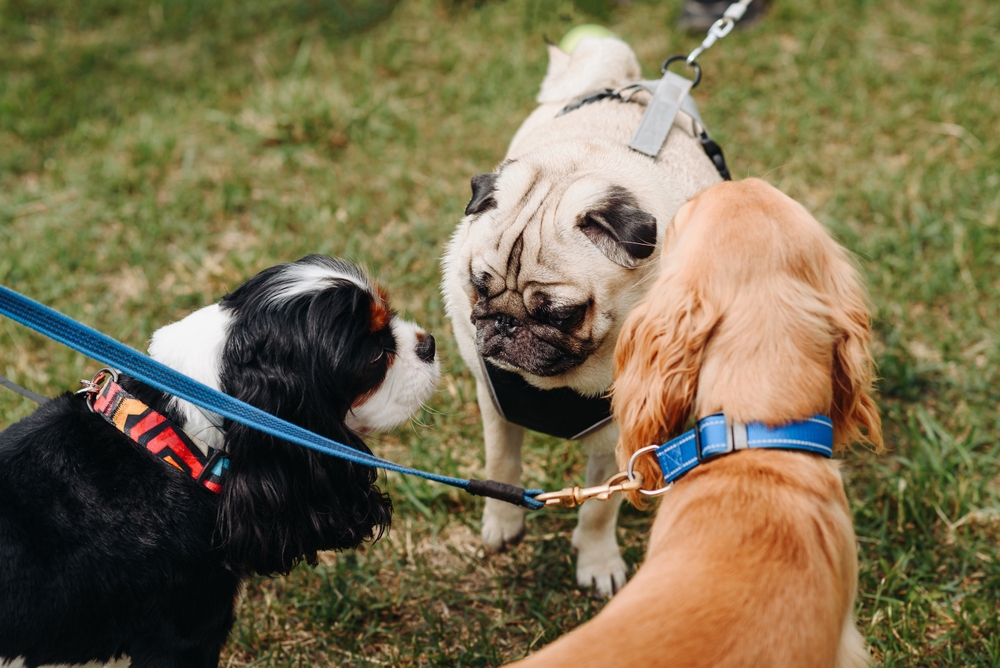
Humping behavior in dogs can be embarrassing for owners, especially in public or with company. While often associated with mating instincts, there are multiple reasons dogs engage in this behavior. It can be a method of asserting dominance, releasing pent-up energy, or simply a play behavior. Sometimes, dogs hump out of excitement or overstimulation, and it’s not uncommon for it to become a habitual action. Identifying the underlying cause is key to addressing this behavior.
Redirecting your dog’s attention and providing ample exercise can help mitigate this tendency. If the behavior persists, training commands with positive reinforcement can establish boundaries. In cases where humping is linked to anxiety or stress, calming supplements or consultation with a behaviorist might be necessary. Understanding that humping is a natural behavior can ease the embarrassment and guide a constructive approach to management. Patience and consistency are vital in helping your dog learn more appropriate ways to express themselves.
9. Digging
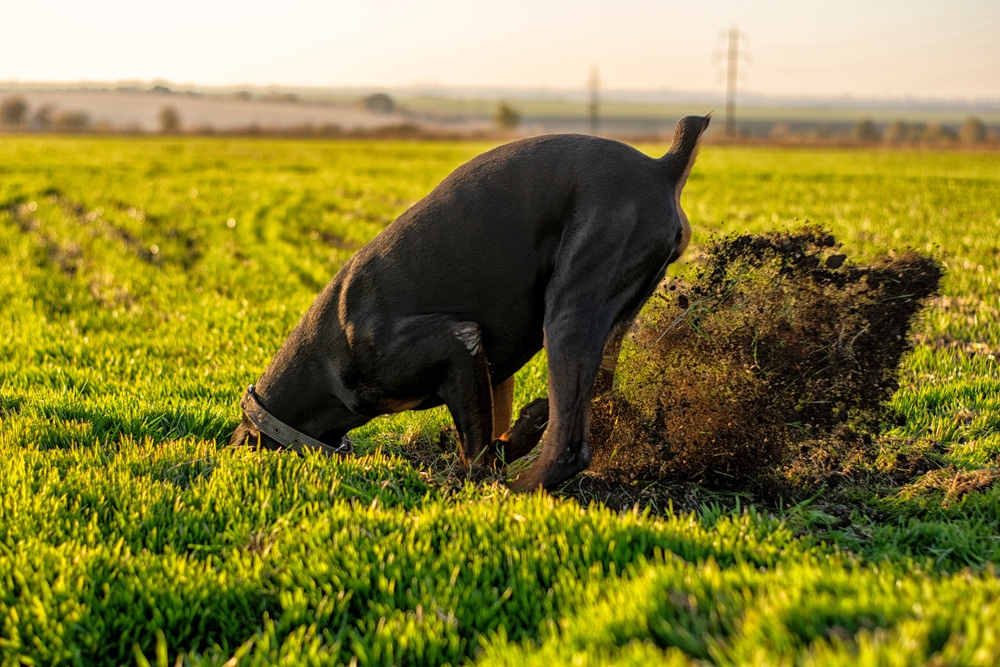
Many dogs love to dig, leaving their owners with patchy lawns or flower beds in disarray. This behavior is instinctual, tracing back to their ancestors who dug for prey, warmth, or a safe den. Dogs may dig to cool down on hot days, seeking the cooler earth beneath the surface. Boredom, anxiety, or hunting instincts can also trigger digging, turning your yard into their excavation site. Understanding the motivation behind your dog’s digging is crucial for addressing it effectively.
Providing a designated digging area can satisfy your dog’s natural urge while preserving your garden. Interactive toys, increased exercise, and mental stimulation can divert their energy into more acceptable outlets. If digging is related to separation anxiety, working on building their confidence and independence is essential. Occasionally, digging can be a sign of an underlying health issue, so consulting with a vet might be prudent. With patience and redirection, your dog can enjoy their digging hobby without wreaking havoc.
10. Licking Everything
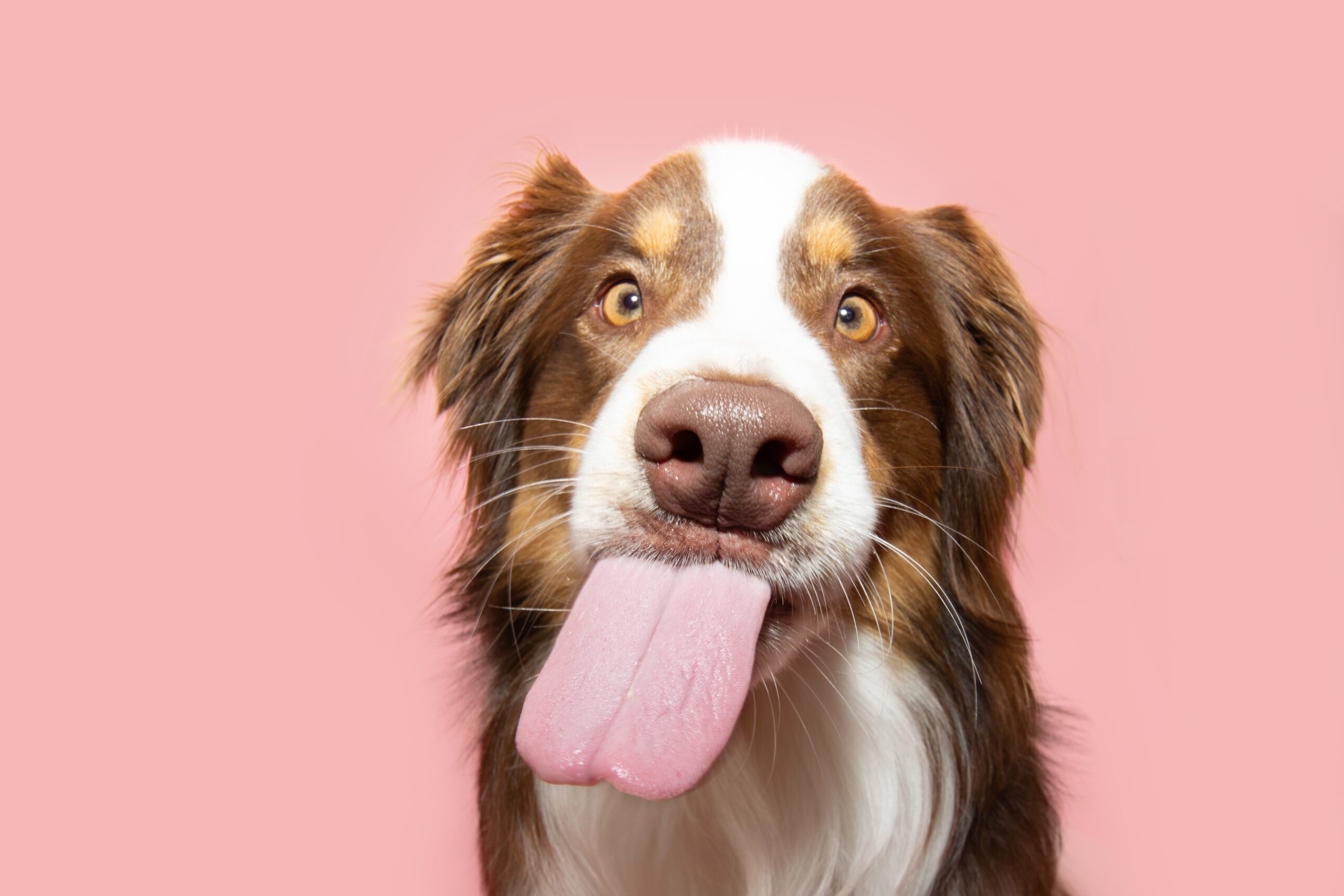
Dogs use licking as a form of communication, exploration, and affection. If your dog seems to have an insatiable urge to lick everything, it could stem from a variety of reasons. Licking releases endorphins that provide comfort and reduce stress, offering a sense of security. This behavior can also be a way to gather information about their surroundings or the humans they love. While occasional licking is normal, excessive licking might indicate an underlying issue.
If your dog licks obsessively, it might be worth looking into possible allergies or skin irritations. Anxiety, boredom, and attention-seeking are other common triggers for excessive licking. Increasing playtime, providing mental challenges, and ensuring a balanced diet can help manage this behavior. Redirecting their focus with training or toys often reduces compulsive licking. Understanding the cause allows you to address it effectively, ensuring a happier, healthier pup.
11. Howling

Howling is a classic canine behavior, often reminiscent of their wild ancestors. Dogs howl as a form of communication, whether to alert you, express loneliness, or respond to certain sounds. Sirens, musical instruments, or even other dogs can trigger this instinctual vocalization. Howling can also be a call for attention or a way to express separation anxiety when left alone. While this behavior can be endearing, it might become a nuisance if it’s constant or disruptive.
Providing companionship and mental stimulation can mitigate howling born from loneliness. Training and reassuring your dog with positive reinforcement can manage excessive vocalizations. Identifying the triggers and desensitizing your dog to them may reduce unwanted howling. In some cases, professional training might be necessary to address persistent howling. Understanding the roots of this behavior can help you enjoy the musical side of your pup without the accompanying headaches.
12. Walking in Zigzags
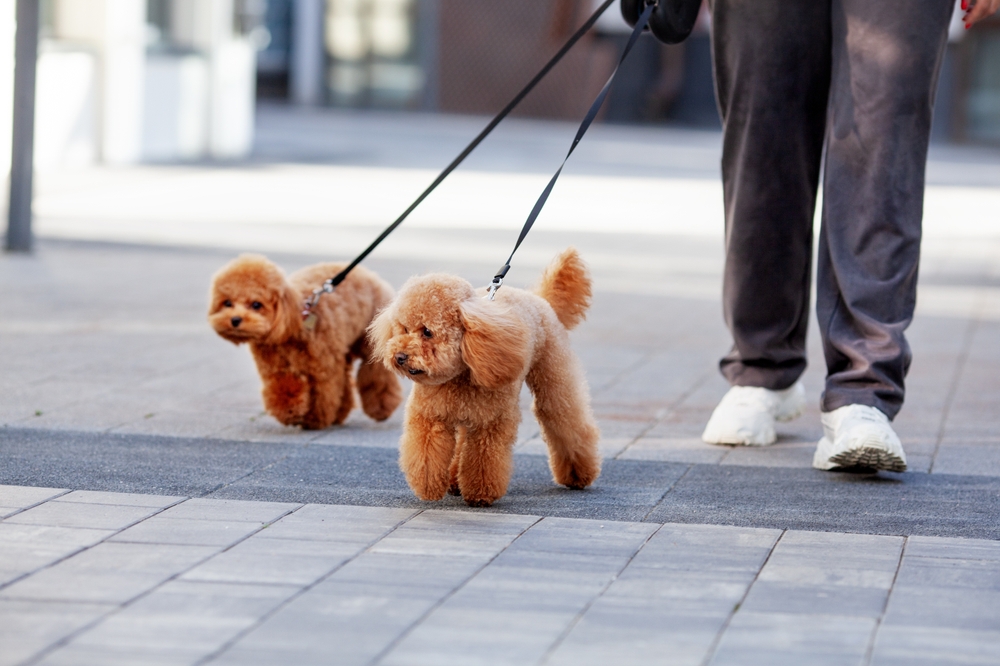
Taking your dog for a walk can sometimes feel like navigating a zigzag obstacle course. This erratic movement stems from a dog’s natural curiosity, as they dart from scent to scent. In the wild, this zigzag pattern would help dogs track smells more effectively, ensuring they gather as much information as possible. While it’s instinctual, it can be frustrating for owners trying to maintain a brisk pace. Training your dog to walk in a straight line can make walks more enjoyable for both parties.
Teaching commands like “heel” can help keep your dog in line during walks. Using treats and positive reinforcement to reward straight walking encourages good behavior. Allowing sniff breaks at designated points can satisfy their curiosity while maintaining control. Patience and consistent training will eventually lead to a more orderly walking experience. Embracing their natural tendencies while setting boundaries creates a harmonious walking routine.
13. Leaning on You

Feeling the weight of a dog leaning against you can be both comforting and amusing. This behavior is often a sign of affection and trust, as dogs lean on those they feel comfortable with. Leaning can also be a way to seek attention or reassurance, especially if your pup is feeling anxious. On a more practical level, leaning helps dogs balance themselves, particularly larger breeds. Understanding this behavior can help you interpret your dog’s emotional needs.
If your dog leans excessively, it might be worth considering their overall emotional well-being. Providing ample affection, playtime, and security can reassure them and reduce dependency. Encouraging independence through training can also help foster confidence. Remember, leaning is usually a loving gesture, not a sign of dominance. Embracing this behavior while maintaining a balanced relationship will strengthen your bond with your pup.
14. Sleeping with Their Belly Up

Seeing a dog sprawled out on their back, belly exposed, is often a sign of ultimate relaxation. This vulnerable position indicates trust and contentment, as they feel safe enough to let their guard down. Sleeping belly-up can also help dogs cool down, as the fur on their stomach is thinner. While this position is adorable, not all dogs choose to sleep this way, and that’s perfectly normal. Each dog has their unique sleeping preferences, influenced by comfort and security.
If your dog frequently sleeps belly-up, it’s a positive indicator of their comfort in their environment. Ensuring they have a cozy, safe space to sleep can encourage this behavior. Observing their sleeping positions can provide insight into their overall well-being and happiness. Conversely, a dog that avoids this position might need more reassurance and a stress-free environment. Understanding your dog’s sleep habits contributes to a holistic view of their health and happiness.
15. Acting Crazy After a Bath
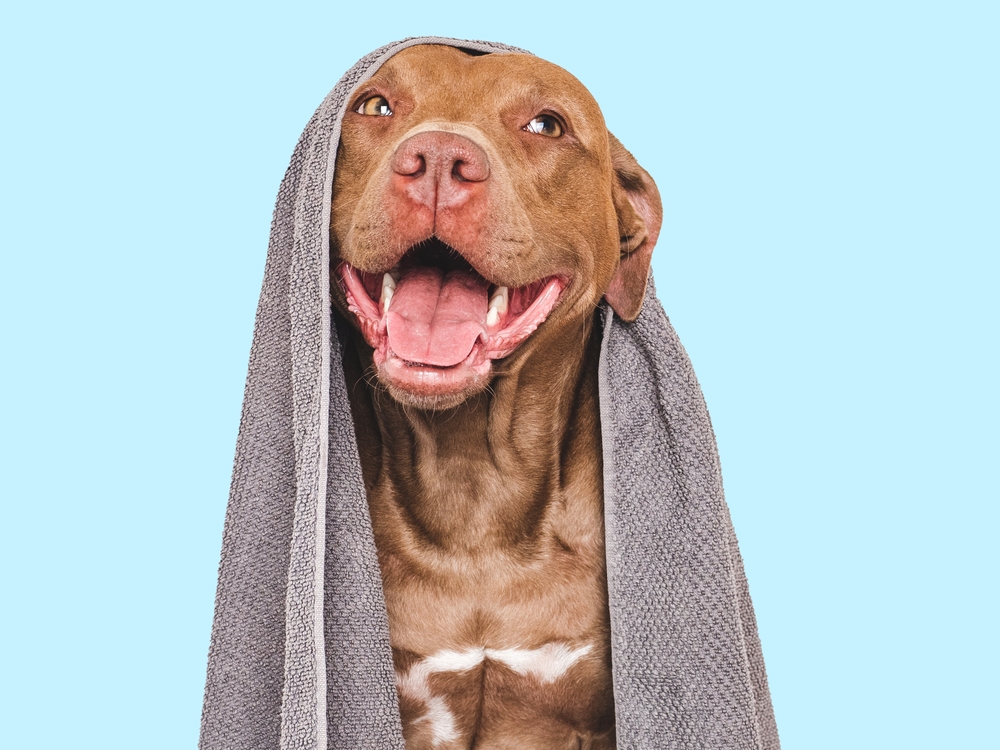
If your dog goes into a frenzy after a bath, darting around the house like a whirlwind, you’re not alone. This post-bath energy burst, often called the zoomies, is a common phenomenon. Dogs might be trying to dry off faster, release pent-up energy, or simply celebrating their freedom. Bathing can be stressful, and this crazy burst is a way for them to shake off any residual anxiety. The combination of excitement, relief, and restored natural scent fuels these entertaining antics.
Embracing the zoomies as a natural response can make bath time less stressful for both you and your dog. Allowing your pup a safe space to run around helps them expend this energy safely. Creating a positive bathing experience with treats and affection can reduce post-bath stress. Understanding that this behavior is typical can alleviate concerns and enhance your bond with your dog. Remember, sometimes embracing the chaos is part of the fun of having a furry friend.
